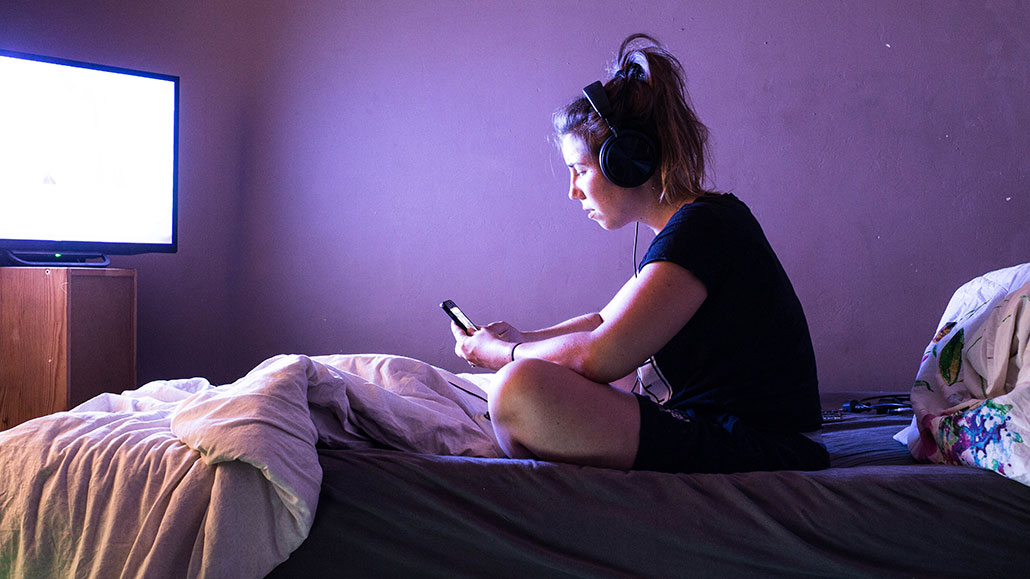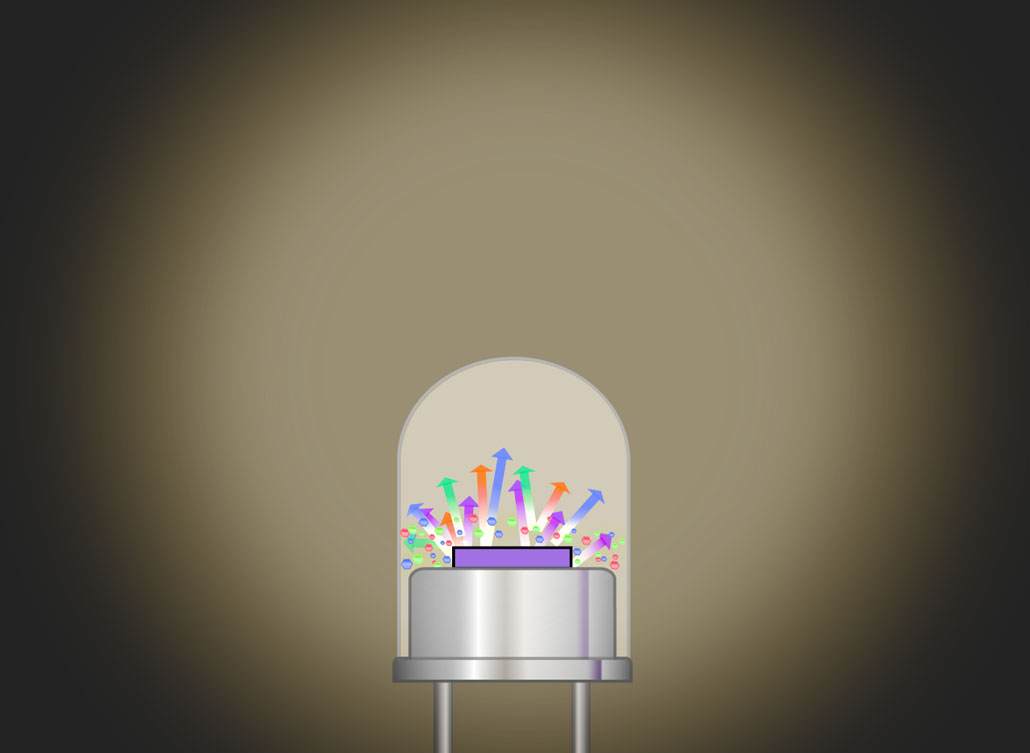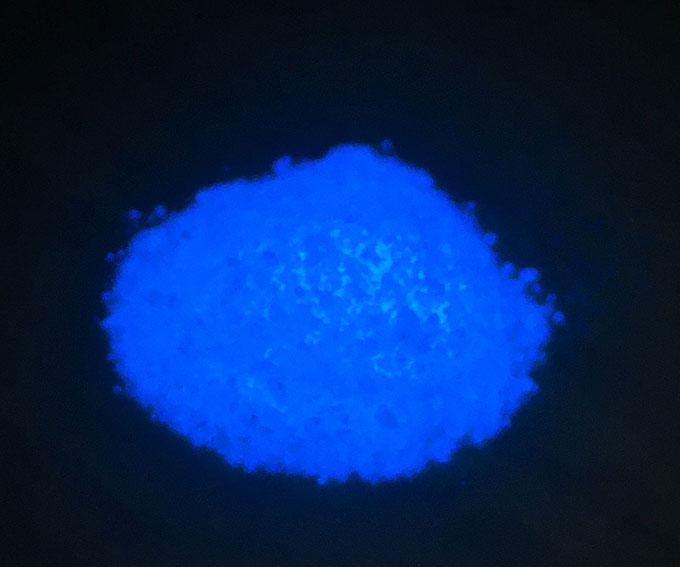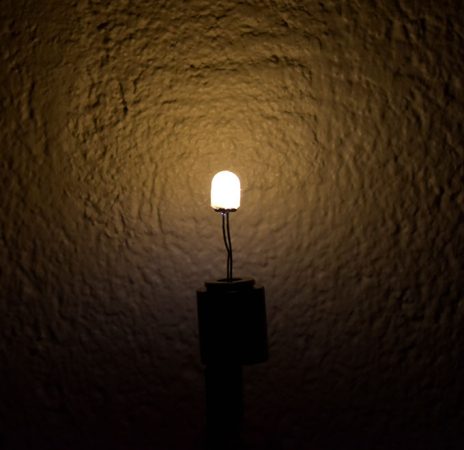Sleep-friendlier lighting is on the way
A new LED could lessen how much near-bedtime lighting impairs your ability to nod off

Most modern indoor lighting and screens use blue LEDs, which emit light wavelengths that confuse the brain’s internal clock. That can make it hard to fall asleep.
cerro_photography/iStock/Getty Images Plus
By Manasee Wagh
Don’t watch TV close to bedtime. Put away your phone, too, or you may have trouble falling asleep. You may not realize it, but the blue light from device screens and even common lamps will confuse your brain’s internal 24-hour clock. Even “white” light contains these blue wavelengths. And when blue light enters the eyes, your brain gets the message that it needs to stay awake. But a new type of lighting appears to get around these sleep-challenging effects so you can nod off easily at bedtime.
This new light-emitting diode, or LED, might someday deliver the glow in lamps and other types of home lighting, its developers say. It might even find use in TV, laptop and smartphone screens, says Jakoah Brgoch. He’s a chemist at the University of Houston, Texas. He also helped design the new lighting technology.
He and fellow University of Houston chemist Shruti Hariyani have been studying the properties of phosphors. These substances glow when hit with light.
Light shines through the lens of an LED, usually a plastic bulb. Behind the scenes is an LED chip, which has small light-emitting diodes attached to a printed circuit board. When the chip is coated with powdered phosphors, the color of the light shining through the lens changes. The Houston team created a new phosphor to make their LED shine with a “warm” white light. Here, warm means the light contains less of the short, blue wavelengths that can mess with sleep.
Those same blue wavelengths are found in sunlight. And they tell your internal body clock that it’s time to be awake. Normally that body clock winds down as daylight fades. Melatonin is a hormone produced at night. It helps bring on sleep — unless blue light tells your body otherwise. Blue light suppresses the melatonin hormone.
And our bodies may well get confused if it’s late and our eyes remain bathed in blue light from devices or indoor lighting. Even though your body craves sleep, it’s still getting that signal for wakefulness.
Most modern screens and lighting systems use blue LEDs. They are energy efficient, long-lasting and cost little. But, Hariyani says, “you have to be okay with the negative side effects [of their light] — or fix it.”
She’s part of a team that’s choosing to fix it.
How to lose the blues

Software helps some devices emit less blue light. For example, the iPhone’s “night” mode shifts its color palette. But this makes images look more red than normal, so users give up color quality. Plus, the LEDs in this and other smartphones still emit enough blue light to affect the body’s internal clock and melatonin production. People can block out some blue light by wearing yellow glasses near bedtime. However, this too will distort the hues in whatever you’re viewing.
Says Brgoch, “We wanted to know: ‘Can we get to a high-quality light bulb with warmer and better quality light?’”
LEDs create white light by mixing red, green and blue hues. While these same primary colors of pigment in paint or crayons mix to make black, light works the opposite way. The white light shining out of an LED comes from the bulb color plus the colors of the phosphors used to coat the LED. Common house lighting uses blue LEDs coated with phosphors whose colors add to the LED’s colors to make white light.
A rarer type of LED has a violet bulb. Places such as museums and clothing stores install white lighting made using violet LEDs. That’s because these are designed to show an object’s true color better than the more common bluer LEDs used in most home lights. One drawback is that violet LEDs cost more. Still, Brgoch and Hariyani chose them for their prototype to get the best color.

To reduce their LED’s blue emissions, the chemists first altered a white powdered crystal that didn’t glow on its own. They added a bright silver-colored element to the powder’s structure. This europium turns the crystal into a phosphor. Europium often is added to lighting phosphors because it helps boost the blue part of an LED’s glow. In this case, it made a true, high-quality blue good for use in an LED. That blue can combine with other colors to make white light.
The Houston team tested the new phosphor to make sure it wouldn’t break down easily. They exposed it to heat and water. Not only did the phosphor continue to glow at the same intensity, but its color remained steady. Having all of these properties at once makes it superior to many other phosphors, Hariyani says.
Then they mixed the blue phosphor with red and green ones to create white light. The chemists added this combination to a modified violet LED. Compared to standard violet LEDs, this new one emits far less intense blue light.
Good white and good night?

“There’s maybe a dozen phosphors used around the world in lightbulbs,” notes Brgoch. “To find something new that’s on par with what you can buy is fantastic.” And, he adds, its lower production of short, blue wavelengths should reduce its effect on someone’s nighttime secretion of melatonin.
But other aspects of light also influence the body, warns Mariana Figueiro. Her work at Mount Sinai Hospital in New York City focuses on how light affects the body clock and melatonin.
Brightness and colors of light other than blue — such as green and yellow — also affect the body’s natural readiness for sleep, Figueiro notes. To leave nighttime melatonin alone, she explains, “A light source needs to have both low light levels and less blue light.” She wonders if everyday lamps and screens could be dim enough not to interfere with the body’s internal clock and still be bright enough for practical use. Still, she says, it’s certainly worth studying.
To know if the new LED could help people who want to sleep better, scientists will have to measure its effect on melatonin.
“This is science that is still relatively new to us,” Brgoch says. As such, he says it will take some time for scientists to fully understand how to use the new LEDs in household items.
He and Hariyani shared their findings April 14 in ACS Applied Materials and Interfaces.







